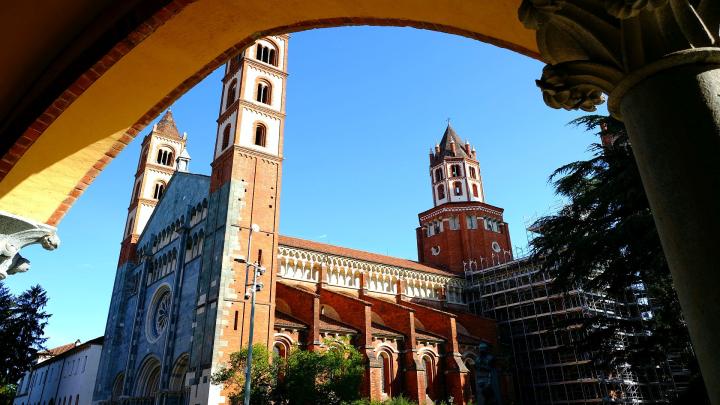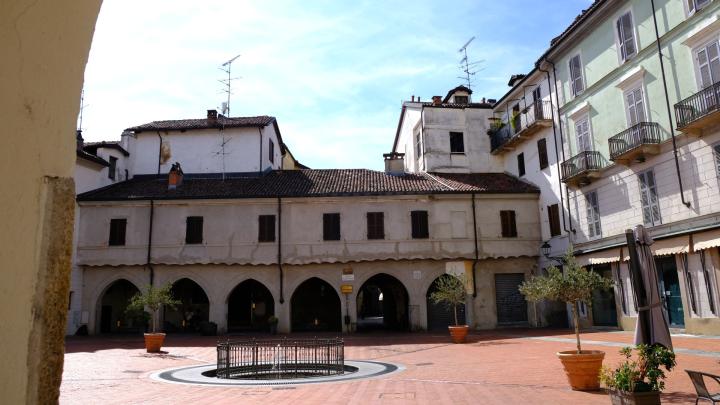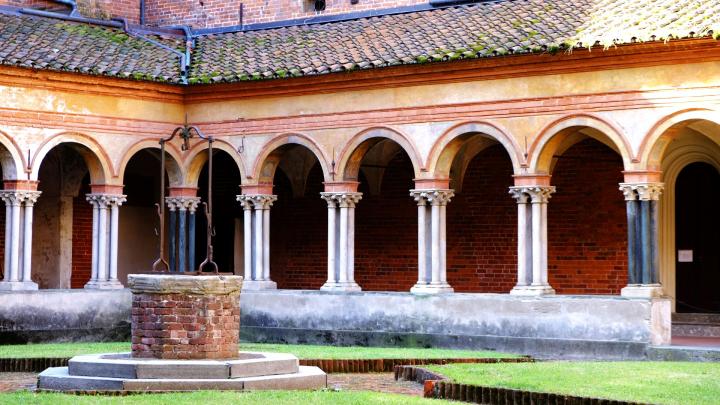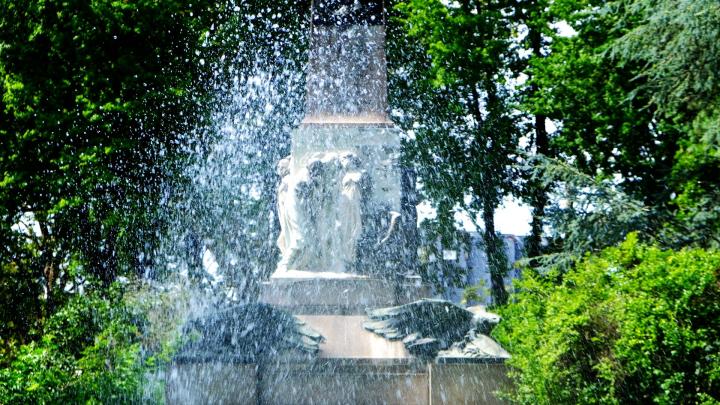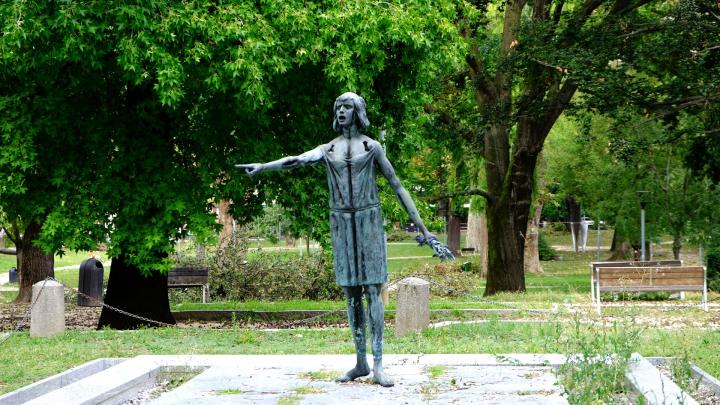Founded by the Celts and colonised by the Romans, today Vercelli is a respected agricultural centre, especially for the rice trade.
From the tourist and cultural point of view, Vercelli on the other hand is a city that does not do much talking about itself, and it is a pity because it actually houses some really beautiful museums , fascinating churches, respectable historical buildings, and an elegant and lively historical centre.
Arriving from the station, the most convenient way to visit the city, you will immediately find a small garden where a Statue is placed in memory of the Mondine, the seasonal workers who used to come here during the summer to work in the rice fields, as we are also reminded by the wonderful film "Riso amaro" by De Santis starring Silvana Mangano.
Past the gardens, in a few minutes we are in front of the majestic Basilica di Sant'Andrea. Noble mixture of Gothic and Romanesque styles, the basilica dedicated to St. Andrew, built beginning in 1219, leaves you breathless.
The interior is sublime, a room of airy, soaring volumes, divided into three naves by massive bundled pillars supporting the arches.
Having finished visiting this beautiful church, you have to stop in the grandiose cloister with round arches supported by double pairs of slender columns. Having some time, it is also advisable to visit the fifteenth-century chapter house, where there are interesting frescoes.
When the visit is over, our advice is to head into the heart of the historical centre, to the beautiful Piazza Cavour, built on the site where perhaps once there was the ancient Roman forum.
Dominated by the tall Torre dell'Angelo, of which a curious legend is still told, the square was named after Count Camillo Benso di Cavour because he built the Cavour Canal, a conduit that allowed for an improvement in rice cultivation in northern Italy in the past.
The statue of the Count stands at the centre of the square, he is depicted while expounding his concept around the organization of the Kingdom of Italy. At its foot are two allegorical statues made by Giuseppe Argenti outlining Agriculture, holding the fruits of the earth, and Commerce, which advocates the free market.
Behind Piazza Cavour is Broletto, also called Piazza dei Pesci, because right here the fish market was once held.
Of medieval layout, it is the place where the people of Vercelli meet for an afternoon aperitif. From the centre of the square you can see the Torre del Broletto which, in addition to being the oldest tower in Vercelli, is associated with a curious legend.
Walking through the city centre you will notice the many towers found on some palaces, such as that of Palazzo Tizzoni or Palazzo San Marco. One of them, certainly noteworthy is Casa Centoris at no. 204 Corso Libertà.
Not far away, we encounter the Museo Borgogna. The picture gallery is the second largest museum in all of Piedmont, exhibiting just under a thousand works, but all of them of great charm on sacred themes from the fifteenth to sixteenth centuries in Piedmont.
At Via Foà, where the Vercelli ghetto once stood, stands the Synagoue, with its grand blue-and-white sandstone facade embellished with battlements and turrets with onion domes that give an almost exotic touch.
The presence of a Jewish community in the city has been documented since the mid-15th century, but it was not until the emancipation of the Jews sanctioned by Charles Albert in 1848 that the construction of a Temple was required.
Continuing the walk, and heading towards the Cathedral, you will encounter the Visconti Castle. Built in the thirteenth century with a square plan, today it has become the seat of the Palace of Justice.
The imposing Cathedral is dedicated to St. Eusebius, first bishop of Piedmont and patron saint of the city.
It is the main place of worship in Vercelli and stands near the place where St. Eusebius was buried.
Its spacious and bright interior houses several works of art including the monumental crucifix placed in front of the altar stands out. Made in the year 1000 at the behest of Bishop Leo, it is a wooden cross covered with a thin sheet of embossed silver and gold.
Inside we also find the Madonna of the Slap, whose story we refer to in the trivia section.
Another interesting building is The Ark, that is, the former church of St. Mark's, now an exhibition space for contemporary art.
In front of the Town Hall instead is a curious plaque, documenting the union achievements of the women rice workers.
On 1 June 1906, it was determined that the work day should be eight hours. Vercelli is now called "The City of Eight Hours." for this 8-hour workday milestone.
Before leaving the city, you have to stop at a historical pastry shop, or to taste the good bicciolani, the typical Vercelli spice cookies; or taste the delicious truffle cake.
In the historical pastry shop Follis, for example, in Corso Libertà 164, since 1904 they always prepare the same recipe of these delicious cookies. While for the cake, our advice is to go to the historical pastry shop in Piazza Cavour, pastry shop Taverna & Tarnuzzer, that has been delighting the palate of the people of Vercelli for 130 years.
Testo e immagini @alessandra.corra
Archivio @regione.piemonte

